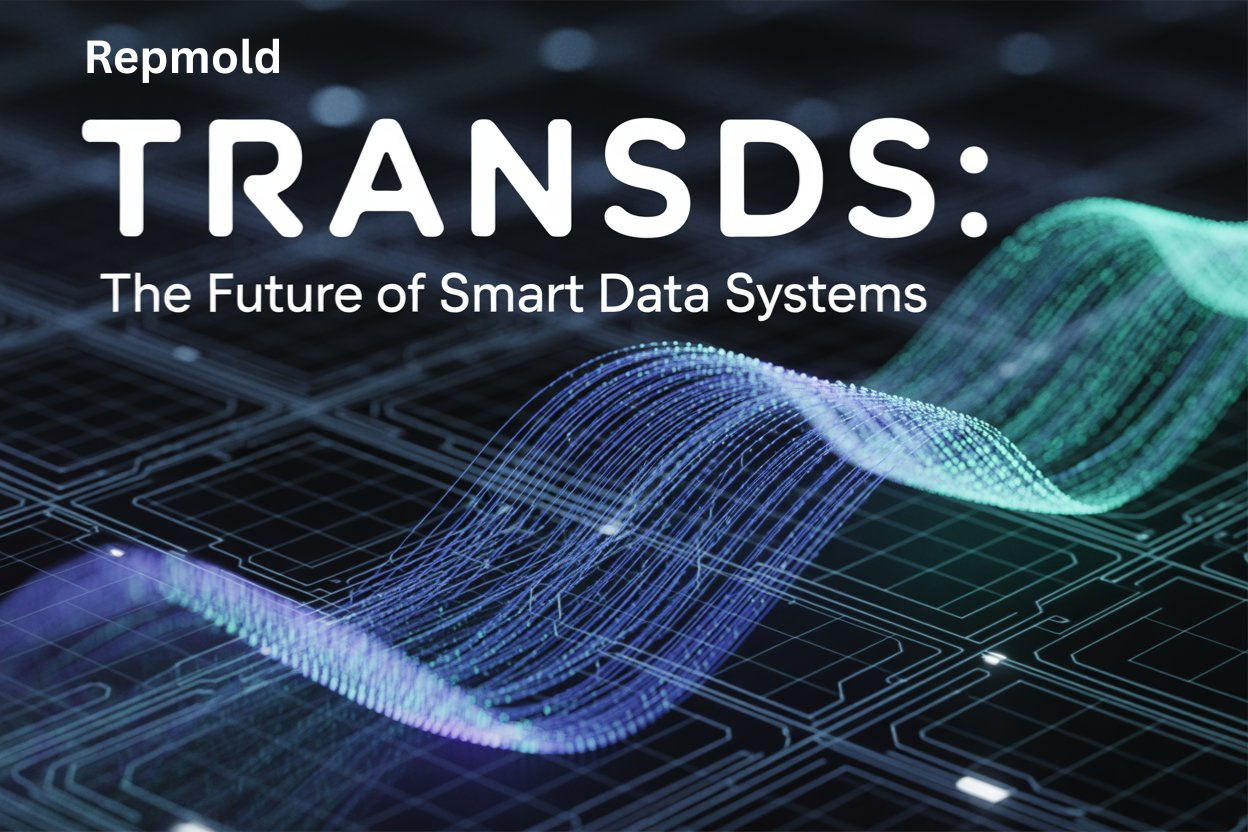Introduction – Understanding the Rise of Transds
In today’s digital age, technology is moving faster than ever before. Every organization wants smarter, more flexible, and more secure data systems. This rapid shift has given rise to a new concept known as Transds. At its core, Transds combines Transitional Data Structures and Transport Dynamic Systems to create intelligent, self-adjusting digital environments.
Transds is becoming a buzzword in digital transformation because it bridges two worlds—data and mobility. It allows systems to communicate, learn, and evolve in real time. Unlike traditional static frameworks, Transds adapts to new data, changing patterns, and dynamic conditions effortlessly.
In this article, you’ll discover how Transds works, where it’s used, and why it’s shaping the future of smart infrastructures. You’ll also learn about its benefits, challenges, and powerful role in building intelligent, connected, and sustainable systems.
What Is Transds? – The Core Concept Explained
Transds stands for Transitional Data and Transport Dynamic Systems. It is an advanced digital framework designed to connect data systems and transportation networks into one smart, flexible ecosystem. In simple terms, Transds helps both digital and physical systems communicate, adapt, and grow together.
Unlike traditional systems that rely on fixed structures, Transds works dynamically. It allows data to move, transform, and reorganize based on real-time needs. At the same time, it enables transport and mobility systems to adjust routes, timing, and performance using live information.
Through this connection, Transds bridges the gap between data architecture and dynamic transport systems. Its main goal is to create self-adjusting digital infrastructures that can think, react, and improve without constant human control. In short, Transds makes digital environments smarter, faster, and more efficient in a constantly changing world.
The Evolution of Data Systems: From Static to Smart
In the early days of technology, data systems were simple but limited. They stored information in fixed formats and followed strict rules. While these systems were reliable, they lacked flexibility. As businesses grew, traditional systems struggled to handle new data types, complex workflows, and real-time demands. This rigidity made it difficult for organizations to innovate quickly or respond to change.
However, the digital era requires speed and adaptability. Companies now need systems that think, learn, and evolve automatically. This is where Transds changes everything. It replaces static processes with adaptive data models that adjust as conditions change. Through real-time analytics, Transds processes data instantly, providing faster insights and smarter decisions.
Moreover, intelligent automation built within Transds removes repetitive tasks and improves efficiency. As a result, data systems become not just functional but dynamic—ready to grow, adapt, and perform in an ever-changing digital world.
How Transds Works – The Dual Framework in Action
The power of Transds lies in its dual framework. It combines two essential pillars that work together to create a smart, self-adjusting environment. These pillars are Transitional Data Structures (TDS) and Transport Dynamic Systems (TDS). Though different in purpose, they operate in perfect harmony to enhance data flow and mobility.
The first pillar, Transitional Data Structures, focuses on adaptability. It allows data to evolve and reshape itself in real time. When new information appears, the system automatically updates its structure without breaking connections. This flexibility ensures that data stays accurate, consistent, and ready for use.
The second pillar, Transport Dynamic Systems, deals with movement and coordination. It enables networks, vehicles, and digital systems to communicate and make quick decisions. Together, these two layers support seamless communication, faster response times, and smarter decision-making across all digital and physical systems.
Key Components of a Transds Architecture
A Transds architecture is built on several smart components that make it adaptive, secure, and reliable. Each layer plays a vital role in keeping data systems efficient and trustworthy. Together, they create a foundation that supports scalability, automation, and long-term performance.
The first key element is the dynamic schema engine. It allows data structures to change automatically as new information appears. This flexibility helps organizations manage diverse data formats without system failures.
Next are the semantic metadata layers, which give data meaning and context. They help systems understand relationships between datasets, ensuring better coordination and clarity.
The AI-driven decision systems come next. They analyze data instantly, predict outcomes, and make intelligent choices with minimal human input.
Finally, governance and security controls ensure compliance and protect sensitive information. Together, these components build trust, maintain transparency, and allow Transds architectures to scale smoothly across industries.
Real-World Applications of Transds
The power of Transds extends beyond theory—it already influences many real-world industries. Its flexible and intelligent design makes it valuable wherever data and movement must work together.
In smart cities, Transds helps manage traffic, energy, and environmental systems in real time. It allows public transport, streetlights, and sensors to communicate, reducing congestion and energy waste. This leads to safer, greener, and more efficient urban living.
In healthcare, Transds connects patient data, wearable devices, and diagnostic tools. It supports predictive analytics, allowing doctors to detect risks early and deliver better care.
In logistics, Transds optimizes routes, tracks shipments, and prevents delivery delays through intelligent automation.
In manufacturing, it powers predictive maintenance, reducing downtime and boosting productivity.
Lastly, for sustainability, Transds promotes green technology by improving resource efficiency and lowering carbon footprints. Together, these uses show how Transds drives a smarter, cleaner, and more connected world.
Major Benefits of Transds for Businesses and Technology
Adopting Transds offers organizations a wide range of benefits that directly improve performance and reliability. Its adaptive design supports smarter, faster, and more secure digital operations across all industries.
One of its biggest strengths is real-time adaptability. Transds can analyze and adjust instantly as conditions change. This allows businesses to make smarter decisions using live, data-driven insights.
Moreover, it ensures increased efficiency by automating repetitive tasks and streamlining workflows. As a result, organizations experience lower operational costs and higher productivity.
Cybersecurity is another key advantage. Transds enhances data protection through intelligent monitoring and transparent governance, reducing digital risks.
Lastly, its improved interoperability connects different systems, tools, and platforms effortlessly, ensuring smooth communication across networks.
Key Benefits of Transds:
- Real-time adaptability for continuous optimization.
- Smarter decision-making through live data insights.
- Greater efficiency and reduced operating costs.
- Stronger cybersecurity and complete transparency.
- Seamless interoperability between digital platforms.
Challenges and Considerations in Adopting Transds
While Transds offers major advantages, adopting it also brings a few challenges that organizations must address carefully. These challenges mainly involve cost, complexity, data protection, and skills.
First, the technical complexity of Transds can make implementation difficult. Its adaptive nature requires strong infrastructure and powerful computing systems. As a result, the initial cost of setup and integration can be high, especially for smaller businesses.
Next, data privacy and governance are ongoing concerns. Since Transds handles real-time data across multiple networks, companies must maintain strict security standards and follow compliance rules. A lack of global standardization can also make system alignment harder.
Additionally, there is a growing skill gap in managing adaptive and intelligent systems. Many organizations still need experts trained in AI, automation, and data architecture.
However, industries are overcoming these barriers through innovation, open-source tools, and collaborative learning programs. With each improvement, Transds becomes more accessible, efficient, and ready for mainstream adoption.
The Future of Transds – Shaping Intelligent Infrastructures
The future of Transds looks promising as it continues to merge with advanced technologies. Emerging innovations like artificial intelligence (AI), edge computing, and blockchain are strengthening its foundation and expanding its capabilities. Together, these technologies make Transds smarter, faster, and more secure.
AI will enhance the decision-making layer, allowing systems to predict and respond automatically. Edge computing will speed up data processing by reducing delays and improving real-time performance. Meanwhile, blockchain will ensure transparency, trust, and data integrity across all networks.
As a result, Transds will completely redefine digital ecosystems, enabling smarter mobility systems, adaptive automation, and connected infrastructures. Businesses will rely on Transds for instant analytics and efficient operations, while smart cities will use it to manage traffic, energy, and sustainability seamlessly.
In the coming years, Transds will stand at the center of intelligent transformation—building a world where data, systems, and people work in perfect harmony.
Conclusion – Why Transds Matters for the Digital Future
In conclusion, Transds stands as a groundbreaking innovation that is transforming global industries. It connects data, mobility, and automation into one powerful ecosystem. By enabling systems to adapt in real time, Transds helps businesses operate smarter, faster, and with greater efficiency.
Its value lies in creating smart and sustainable data systems that evolve continuously. Through intelligent automation, real-time analytics, and adaptive data flow, Transds ensures that technology remains flexible and future-ready. It empowers organizations to make informed decisions while maintaining security, scalability, and transparency.
Looking ahead, Transds will continue to shape the digital future. It will drive innovation, support sustainability, and build intelligent infrastructures across every sector. As the world becomes more connected, embracing Transds will be essential for creating a truly adaptive and intelligent digital ecosystem.

